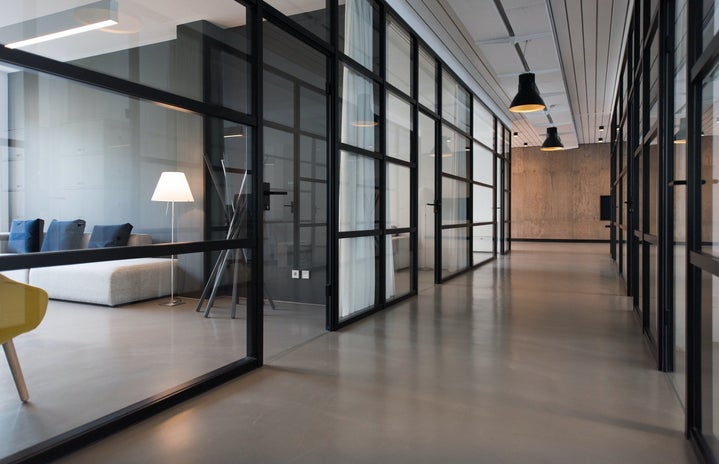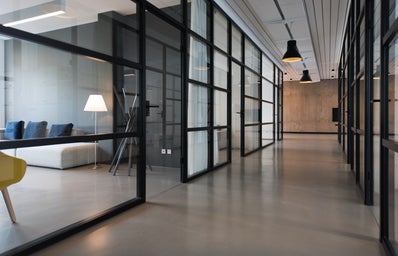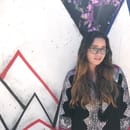Luisa Seijo Maldonado is a professor at UPRM as well as an activist for the community. She has been involved with helping the community around her for over forty years with no plans of retiring in the coming years. She has funded eight organizations across Puerto Rico, and has worked in nine different places where she’s helped and cared for the community.
Her first start with community work happened when she was still in school, when her parents would take her to a community in Vega Baja, Candelaria, called “Raspaurra.” She had been raised in a religious household and this was a part of her family’s dynamic. Her mom would work with the women, and her dad with the men while they left her with the kids. The program where this dynamic took place was called Una Gran Familia and they worked with the interests of the community and what they needed.
Community reunion by El Instituto Universitario Para el Desarrollo de Comunidades in Boquillas 2018. Discussion about the use of a satellite for communication in the community.
She kept this in mind when she went to get her bachelor’s degree in Sociology and Social Work. She did a double degree in three years (1967-1971) in the Pontificio Universidad de Ponce, now known as la Católica de Ponce. As she still does, she wanted to use her time as wisely and as fast as possible. She was the first person in their bachelor’s program who pursued a practice in the orientation and service center for the beach in Ponce (directed at the time by Isolina Ferré). This gave her a bigger glance to see what community work was like.
She studied for her Masters’ at the University of Puerto Rico-Río Piedras campus, where she did her practice at the Escuela Independiente para Mujeres which works with women serving time prison. She also worked in the university project in Vega Baja called Esfuerzos Unidos por Trocha y Río Abajo, or ENTRA. She finished her Master’s in just one year, maximizing her time to start working with communities and the projects she had in mind.
Kids form the community of Mayaguez playing in the Bosque Comunitario of Rio Hondo before Maria at an activity by El Instituto Universitario Para el Desarrollo de Comunidades, 2016.
Before establishing herself in the UPRM, she worked different jobs and made different projects along the way. In February 1972, she worked in Manati’s Centro Comunitario de Salud Mental. She started a program of kids and adolescents in the Río Piedras medicine school where she worked for a year. She also worked with an Alcoholics Anonymous program in Manati. Then, in 1973, she went to work with the Departamento de Servicio contra la Adicción, where she was recruited for the Arecibo-Manati region. There she worked for five years before she quit on August of 1978 due to political issues. That same year in November, she was recruited to work in a private program called Salud en el Hogar where she worked for two years part-time visiting homes in the community doing social work. She worked with bed-ridden people people, terminally-ill people, and people suffering from complex illnesses.
She then moved into the school environment as a teacher in a Vega Baja’s high school as a social studies teacher in 1980; this job was what opened her doors to work in UPRM. There she started an association with the most problematic kids where they helped in the community. She then worked as a social worker in Vega Alta in the Segundas Unidades Rurales in Maricao and Breñas, where she worked with children from kinder to ninth grade.
In 1983, Seijo sent a resume from an advertisement she saw, landing her a job at the Universidad Central de Bayamon where she worked for five years as a professor in social work. Here, she supervised college students that were doing practice at the Proyecto de Comunidad Piñas, a project she started. She then moved to the University of Puerto Rico-Humacao campus where she worked from 1988-1991 in the social sciences department giving social work classes.
The next phase in her life started when she moved into the Rio Piedras campus in the social work department in 1991 where she founded two community projects called Centro Comunitario para Desarrollo Integral de los Niños and Modelo para el Desarrollo Urbano para Comunidades en Desventajas Económicas or for short CODIN and MUNDi. She loved working on these two projects where she worked alongside college students and had them work one-on-one with the community. While she was working in Río Piedras, she went to a conference in the University of Puerto Rico-Mayaguez campus where the Profesor Maria Barbot offered her a project in the campus. At first she declined but told her that maybe along the road she might take the offer. Two days following this offer, her husband had a stroke and she had to be in the west side of the island while her husband was in the hospital. She called Profesor Barbot and asked her if there was any consideration to work at the campus, in which she replied to send a resume.
Girls from Siempre Vivas at UPRM, 2018.
This is how she started her twenty-one year journey at the UPRM campus. She started working on August 1997, but she moved with her family in July since her husband got a job in the Social Services Corporation. Aside from her project Siempre Vivas she founded the Instituto Universitario para el Desarrollo de las Comunidades which she formalized in 2003. Here she works with different communities around Puerto Rico, helping them to get a better life inside the community while bringing awareness in areas like nature, education, and work. Her first encounter which started this was with the Kennedy-Candelario community in 1998. After Hurricane George, the neighborhoods El Mani and Trastalleres asked for help after the devastations that swept them.They did a brigade with students and professors of the whole campus. There where also volunteers from the Kennedy community, which is something that happens regularly in the Institute. You get help and then if possible you help others who had the same or similar struggled that they had in the beginning. In February 2003, the institute was formalized, and there was a seminar which helped to have more than thirty communities became a part of the Institute.
2018’s Marcha Violeta at the UPRM Campus led by Siempre Vivas.
She started her project Siempre Vivas that September with university students from the campus. This project is very dear to her heart since in 1997 a very dear friend of hers, her friend’s 2 daughters, mother, and mothers godfather were murdered by her husband. This murder happened before the 25th Law was put in place. She recounts how the husband had been looking for her friend eagerly after they were separated and even once went to her house and began accusing her because he could not find his ex wife. Luisa was not scared of him and stood her ground not only for her but for her friend who was hiding from him. This led to her passion with working with women of all ethnicities, backgrounds, social classes and everything in between. She began working with seven municipalities and the project has bloomed over time since then. She works with girls who have been in the program before and women who have taken her domestic violence class, who then turn into support the women who are in the program. They go to different universities to help and do their masters’ practice excellently in this project.
2018’s Marcha Violeta at the UPRM Campus led by Siempre Vivas.
Thousand of students have worked with these different projects. She loves having them help because she says that this is sometimes the first encounter they have of community work. She wants UPRM students to have a different experience aside from the college experience they already have to face. She wants to make them aware of the different communities that lie in Puerto Rico and give them the tools so they can help others and along the way change their perspectives on life. Luisa says that this is of incalculable value to herself and the students, as we are called to enable ourselves and provoke a country of justice and equity. She says that the students remember fondly these experiences and when they see her they remind her of the amazing job they did giving them a new way of life where they work with the community.
She urges the student body to join her in her projects where they can see people of all backgrounds. The information for the projects are:
UPRM telephone number: 787-832-4040
Extension: 6203
instituto.comunidades@uprme.edu


